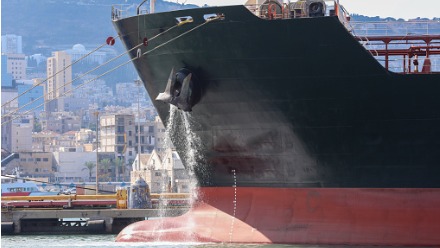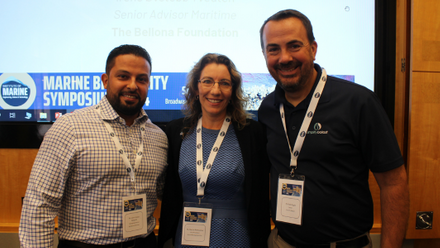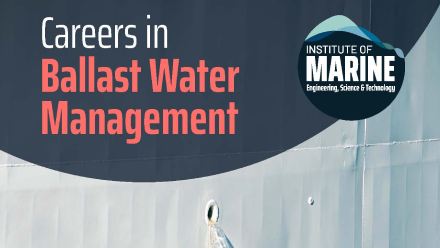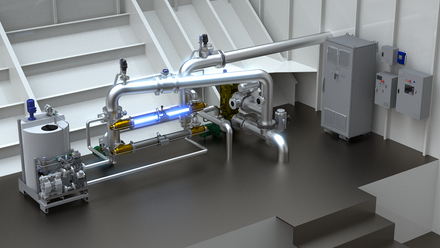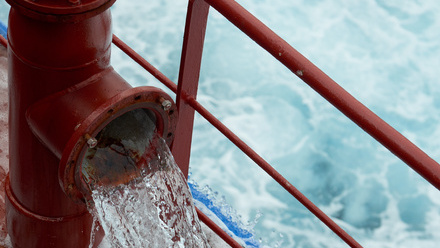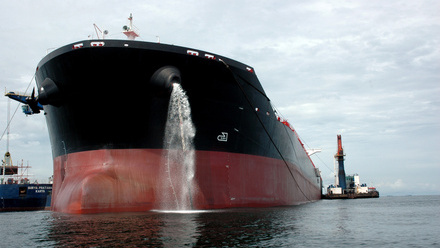Ballast water and biofouling at the 2024 Biosecurity Symposium
Marcie Merksamer, Vice President of EnviroManagement, Inc., FIMarEST and Chair of IMarEST’s Ballast Water Special Interest Group, sits down for a Q&A about the upcoming Biosecurity Symposium.
What is the Biosecurity Symposium about, and why do we need this now?
This Symposium is intended to bring together thought leaders in both the ballast water and biofouling sectors to discuss current challenges and solutions, technology innovation, regulatory developments, enforcement, and compliance, and more. September 8th is important as this marks the date when ballast water treatment under the International Maritime Organization’s (IMO’s) BWM (Ballast Water Management) Convention Regulation D-2 [setting requirements for appropriate treatment systems] becomes mandatory.
While I sometimes hear statements that ‘ballast water is done’ and ‘there is nothing more to discuss’, this is far from reality. There are very relevant and active ballast water topics that are currently being addressed, with one of the most important being a review of the BWM Convention. Development of a package of amendments to the Convention is currently underway, and I encourage all stakeholders to contribute to IMO’s process and pay attention as the amendments could affect their operations. Guidance for ship operations in challenging water quality conditions was also recently published by the IMO, which was an important development to support ship owners and port State control (PSC) procedures in these scenarios.
Discussing how implementation of this guidance in practice impacts ships’ crews, PSC officers, and BWMS (Ballast Water Management Systems) manufacturers is timely for the Biosecurity Symposium. Manufacturers of BWMS are also currently working to support development of IMO guidance on [the] efficient approval of modifications to BWMS that have existing type approval. This process is important to ensure the latest technologies are available and BWMS are operating optimally, that review of BWMS modifications is thorough and systems remain robust, and to support ship owners with compliant ballast water management operations.
Biofouling management is also at a critical stage, with development of in-water cleaning guidelines at the IMO, as well as regulations for some national administrations. Ensuring the necessary technical information is available to support [the] development of regulations that consider all technologies is important for shipowners to have options that fit their ships’ operational needs. With the Symposium covering both topics, lessons learned from the long ballast water journey can also be shared and applied to developments in biofouling management.
The event date and location have been chosen to coincide with the Marine Environment Protection Committee (MEPC 82). How do you think the two events complement each other?
The focus has finally shifted to compliance and enforcement of ballast water management regulations and having this Symposium around MEPC 82 was specifically intended to encourage participation from representatives of national administrations that are responsible for implementing the BWM Convention in their country. These representatives can take relevant technical information gained at the Symposium directly into the conversations that will take place during MEPC 82 the following week.
As one example, my experience is that an impediment to compliance and enforcement is the lack of knowledge that PSC officers have about the various BWMS technologies they encounter during inspections, and specifically how to determine if a BWMS is operating according to specification and how the crew is interacting [and] maintaining the installed BWMS. These are advanced technologies, and considering the many duties that PSC inspectors have when they go onboard, as well as the various systems they will encounter, they need sufficient, but not overly complicated, practical information to support their compliance inspections.
How important are these types of events in addressing marine biosecurity challenges?
As we all know, Covid-19 eliminated the option to have in-person events for a long time. While online and remote participation is wonderful and can be effective, bringing people together again in person offers a greater level of engagement.
While each stakeholder comes to the table with different goals and needs, in the end, we are all humans, and I believe that in person discussion facilitates common understanding and progress. Gathering stakeholders together to discuss challenges, share perspectives, and technical information is critical in addressing any topic, and now is the time to facilitate this transfer of information to support [the] development of practical and effective marine biosecurity practices.
What do you hope will arise out of the Symposium?
My hope is that the Symposium will spark a sense of excitement and diligence in the work we all do towards marine biosecurity, as well as facilitate collaboration between all stakeholders. While our daily work can sometimes feel routine, the work we do supports the environmental sustainability of the global maritime industry [and] that’s important.
Regardless of the sector we represent – science, technology, shipping, or regulatory – we are all players and have a role in preventing [the] transfer of aquatic invasive species. Bringing stakeholders and thought leaders together can lead to a better understanding of the various perspectives and development of solutions that can be effectively implemented.
The Biosecurity Symposium takes place on Thursday 26th and Friday 27th September in London, England.
Discover more about IMarEST’s Ballast Water Management Special Interest Group and Biofouling Management Special Interest Group.
Image: fouled sailboat propeller; credit: Shutterstock.
Tell us what you think about this article by joining the discussion on IMarEST Connect.

